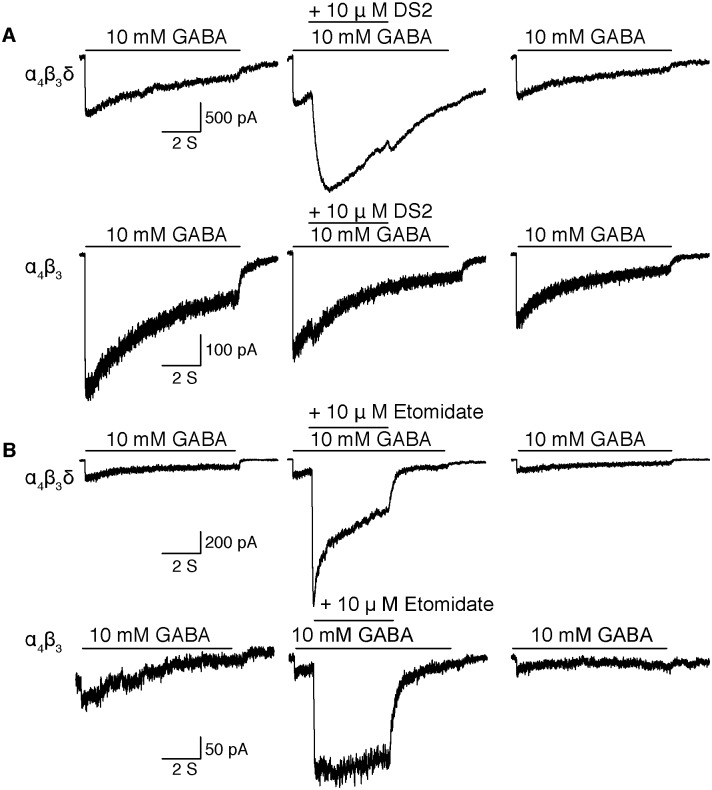The inhibitory γ-aminobutyric acid type A receptors are implicated in numerous physiological processes, including cognition and inhibition of neurotransmission, rendering them important molecular targets for many classes of drugs.
Functionally, the entire GABAAR family of receptors can be subdivided into phasic, fast acting synaptic receptors, composed of α-, β- and γ-subunits, and tonic extrasynaptic receptors, many of which contain the δ-subunit in addition to α- and β-subunits.
Whereas the subunit arrangement of the former group is agreed upon, that of the αβδ GABAARs remains unresolved by electrophysiological and pharmacological research. To resolve such issues will require biophysical techniques that demand quantities of receptor that have been previously unavailable.
Therefore, we have engineered a stable cell line with tetracycline inducible expression of human α4-, β3- and N-terminally Flag-tagged δ-subunits. This cell line achieved a specific activity between 15 and 20 pmol [3H]muscimol sites/mg of membrane protein, making it possible to obtain 1 nmole of purified α4β3δ GABAAR from sixty 15-cm culture dishes.
When induced, these cells exhibited agonist-induced currents with characteristics comparable to those previously reported for this receptor and a pharmacology that included strong modulation by etomidate and the δ-subunit-specific ligand, DS2.
Immunoaffinity purification and reconstitution in CHAPS/asolectin micelles resulted in the retention of equilibrium allosteric interactions between the separate agonist, anesthetic and DS2 sites. Moreover, all three subunits retained glycosylation. The establishment of this well-characterized cell line will allow molecular level studies of tonic receptors to be undertaken.

Non-Fermi liquids in oxide heterostructures.
Understanding the anomalous transport properties of strongly correlated materials is one of the most formidable challenges in condensed matter physics. For example, one encounters metal-insulator transitions, deviations from Landau Fermi liquid behavior, longitudinal and Hall scattering rate separation, a pseudogap phase, and bad metal behavior.
These properties have been studied extensively in bulk materials, such as the unconventional superconductors and heavy fermion systems. Oxide heterostructures have recently emerged as new platforms to probe, control, and understand strong correlation phenomena. This article focuses on unconventional transport phenomena in oxide thin film systems.
We use specific systems as examples, namely charge carriers in SrTiO3 layers and interfaces with SrTiO3, and strained rare earth nickelate thin films. While doped SrTiO3 layers appear to be a well behaved, though complex, electron gas or Fermi liquid, the rare earth nickelates are a highly correlated electron system that may be classified as a non-Fermi liquid.
We discuss insights into the underlying physics that can be gained from studying the emergence of non-Fermi liquid behavior as a function of the heterostructure parameters. We also discuss the role of lattice symmetry and disorder in phenomena such as metal-insulator transitions in strongly correlated heterostructures.
